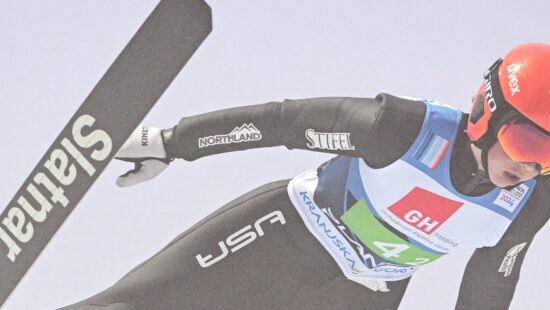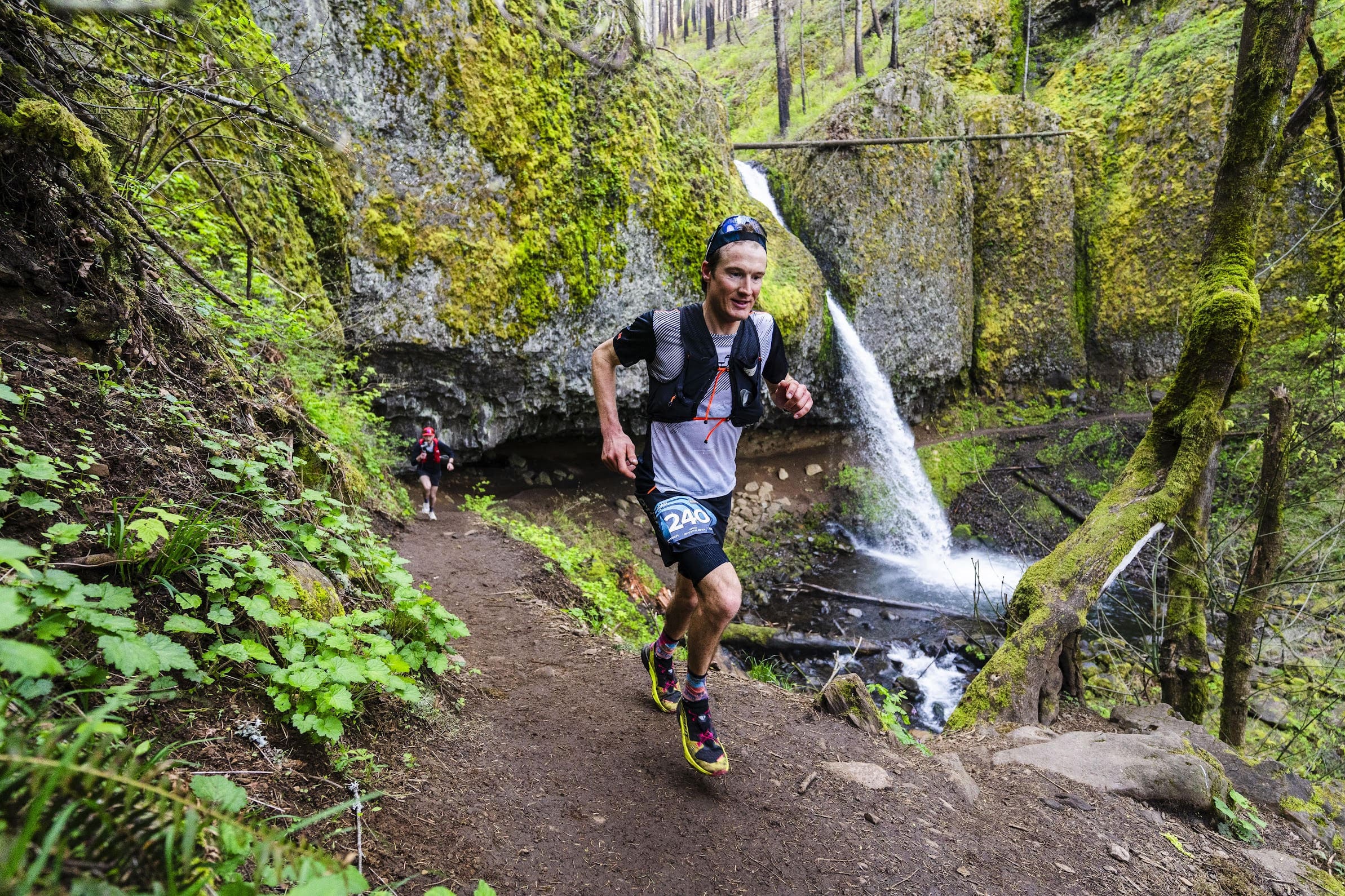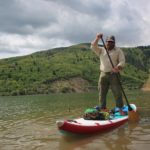Sports
Anders Johnson adds ski jump suit maker to resume of coach, Olympian
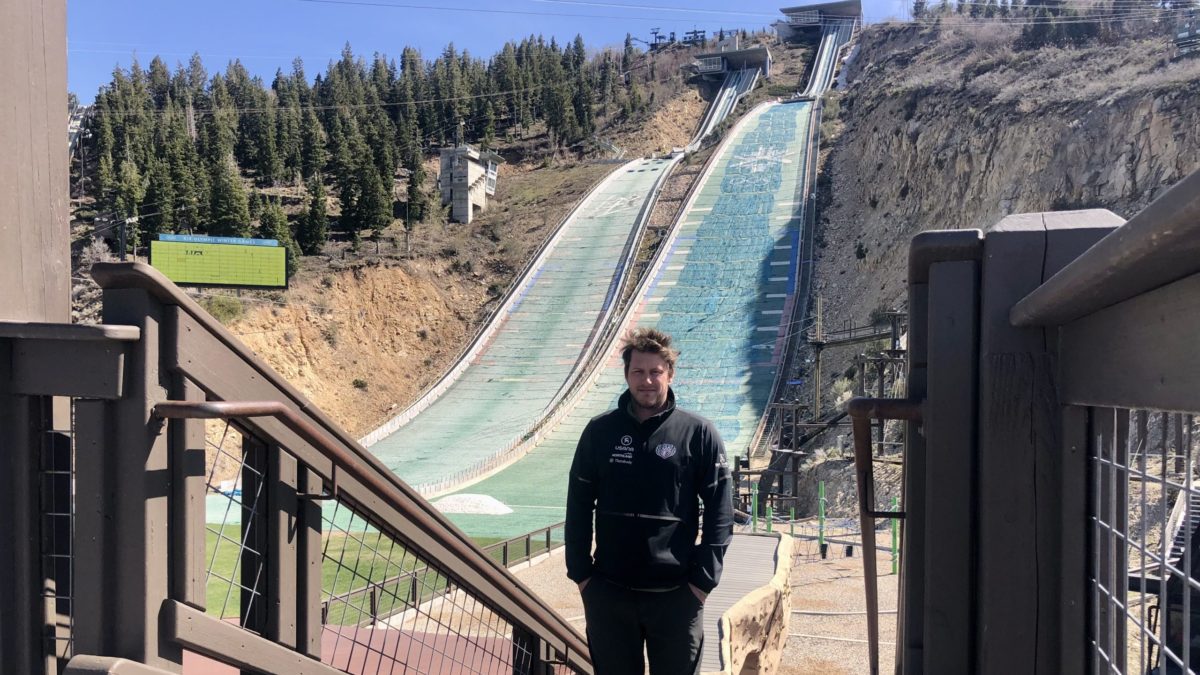
Anders Johnson at the Utah Olympic Park where he makes ski jumping suits for USA Nordic. Photo: Michele Roepke
PARK CITY, Utah — Anders Johnson is the only person in North America making suits for nordic ski jumping athletes. Traditionally a European endeavor, the Olympian is creating custom suits for the athletes to whom he’s the Head Women’s Coach. It stems, in part, from his sewing skills gained from his mom, Chris, Home Ec. classes growing up in the Park City School District, filling financial/logistical niches for USA Nordic, and from being disqualified at his third Olympics for a suit violation.
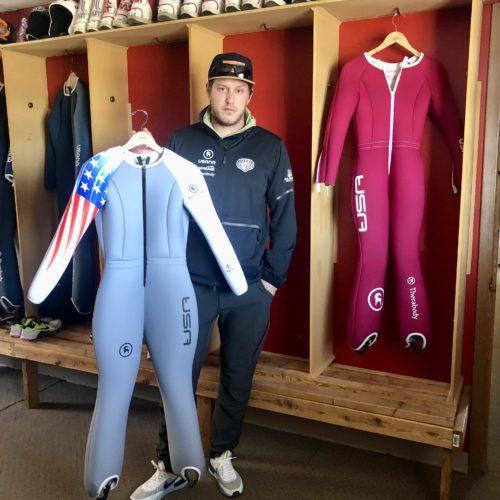
It takes about 20 measurements, about two hours, and about $200 to create one of the four suits each of his athletes will wear in a year, as compared to the 40 suits a European counterpart may wear that year.
A new dad to son Theo and husband to fellow native Park City elite ski athlete, Sydney, Johnson is a skosh over six feet tall. Josie Johnson (no relation), an athlete of his, is a skosh under five feet, illustrating the accuracy with which each suit needs customization. One commonality the two do share however, is that they both made the National Team at the youngest age, 15.
He travels the world coaching world cups with an inseam measurement machine, an air permeability machine and a sewing machine.
Not only do bodies change every hour due to hydration/nutrition levels, but suits change due to cold, hot, humidity, elevation and how new the suit is. These changes represent challenges to the mere few of the hundreds of sport-specific equipment rules set by the International Ski Federation (FIS).
Athletes stand with their feet 40 inches apart while officials check their inseam to ensure excess material won’t give anyone an unfair advantage and catch more air in flight. Also, there can’t be any less than 40 liters of air and there can’t be a bigger difference between more than eight percent regarding the suit’s fit.
When Anders was DQ’ed in Sochi 2014, his event wasn’t until 10:00 p.m. As an elite athlete he purposely skipped dinner, so when Equipment Control measured him, his ski jumping suit was determined to be non-compliant within the two centimeters away from the body rule. His suit, at the Olympic Games, was four millimeters too large.
“The one unfortunate part of our sport is that disqualifications are pretty prevalent. It’s something that can happen to any given jumper at any given moment. At almost every FIS ski jumping competition, someone’s being disqualified for some kind of rule infringement,” Anders said.
Johnson explained the importance of Anders’ talented suit making,
“After using used suits for my whole athletic career and having an Anders suit this year, the first jump I made in it was like the difference between jumping in a wet paper towel to now jumping in a crisp piece of paper. Now I fly far.”
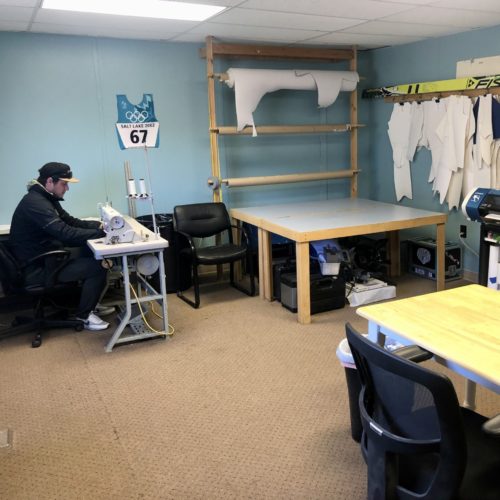
In the Beijing 2022 Olympics, suit violations disqualified many international female athletes. Anders said that most of the time, team captain’s meetings include discussions and warnings to nations demonstrating potential red flags. He said, “Though it is shocking to see DQs, it’s not always surprising. It’s not that it’s so unfortunate when a DQ occurs, but it’s more-so fortunate when it doesn’t.”
His dad, Alan, and his sister, Alissa, are also involved in the ski jumping industry at high international levels and they all simply want fair play. Thus, the remedy Anders opines to quell such frustrations isn’t for FIS to have fewer regulations, or even reformed regulations, but to strive to consistently enforce the ones already on the books.
Someone else who knows much about suits is Park City’s Stacey Border. Border volunteers as a starter at the top of the ski jumps. Athletes are discouraged, after being measured in the start area, from sitting, standing, walking, jogging in place to keep warm, bending over to loosen boots to relieve frozen toes, even adjusting their goggles for fear of displacing the suit and it being too loose in some parts of the body like under the arms. Border said, “We, as officials, are really here for one reason and one reason only, the athlete’s safety. We’re just trying to be accommodating to the jumpers and they’re just trying to win a competition as we all just want integrity in the sport so some stressful energy definitely happens at these venues.”
Sewing suits is one part of the equation that Anders can control in his sport and he welcomes all the help he can get as he’s already inspired a Jr. national team member who’s making his own suit for a Jr. high school project.
Anders plans to continue making ski suits and when I asked him how it would be if, in ten years the Olympics came back to where he was born and raised in Park City, and the European countries were contacting him to make their ski jumping suits, he smiled, raised his eyebrows, and said, “Cool.”















